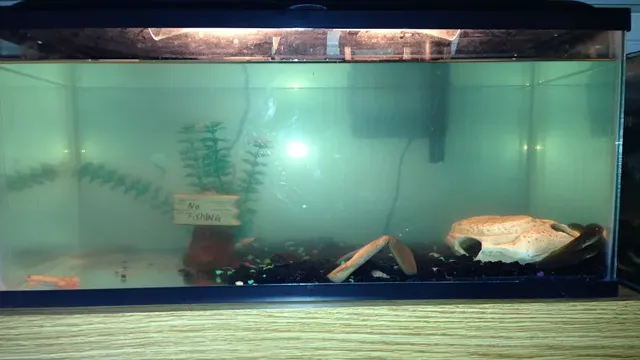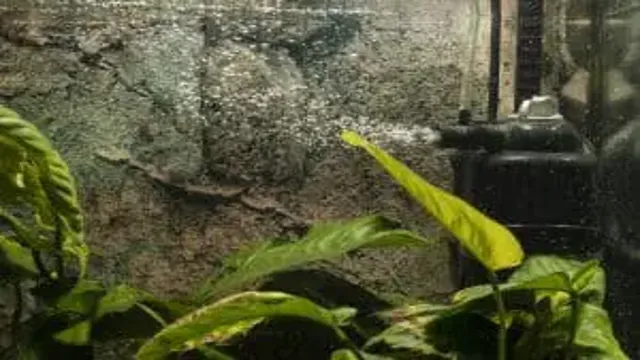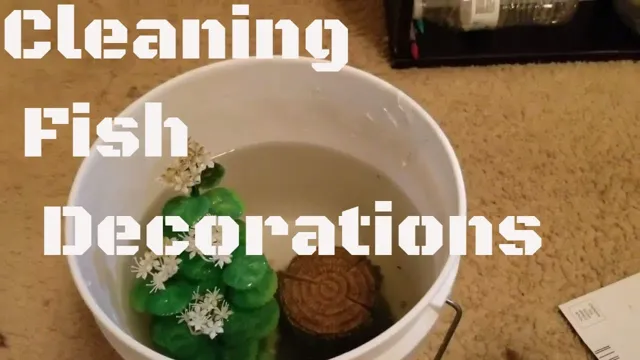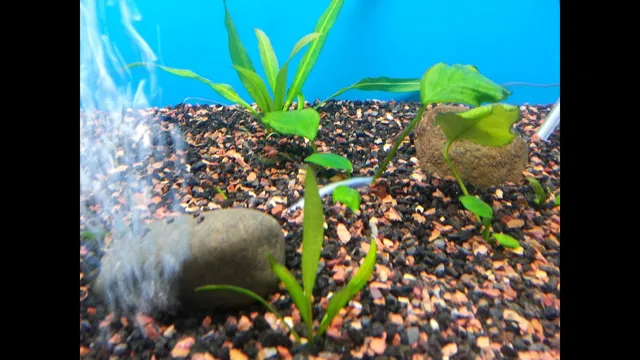Setting up an aquarium is an exciting experience, but it’s easy to feel overwhelmed with all the equipment needed. From the heater to the lighting, there are a lot of moving parts involved. However, one of the most important items is often the most overlooked – the filter.
A properly functioning filter is vital for the health of your aquarium’s inhabitants, as it ensures that the water stays clean and free from harmful toxins. In this blog post, we’ll explore the basics of setting up an aquarium filter, so you can create the best living environment for your aquatic friends. So, let’s dive in and get started!
Choosing the Right Filter for Your Aquarium
When it comes to setting up an aquarium filter, there are a few key factors to consider to ensure your fish and other aquatic inhabitants thrive. Firstly, it’s important to choose the right type of filter for your tank size and the type of fish you have. Hang-on-back filters are great for smaller tanks, while canister filters work well for larger aquariums.
You’ll also want to look for a filter with a high flow rate, which will help keep your tank clean and healthy. Another factor to consider is the type of media you’ll be using in your filter, such as mechanical, biological, or chemical filters. Each type serves a different purpose, with mechanical filters removing debris, biological filters promoting healthy bacteria growth, and chemical filters addressing specific water quality issues.
Ultimately, taking the time to select the right filter and media for your aquarium will go a long way in providing a healthy and enjoyable environment for your aquatic pets to thrive.
Consider the Size and Type of Your Aquarium
When it comes to choosing the right filter for your aquarium, one of the most important factors to consider is the size and type of your tank. A filter that is too small or ineffective for the size of your tank can result in poor water quality and health issues for your aquatic pets. On the other hand, an overly powerful filter can create strong currents and disrupt the natural flow of your tank.
It’s also essential to consider the type of aquarium you have. Different types of tanks, such as saltwater or planted tanks, may require specific types of filters. For example, a protein skimmer may be necessary for a saltwater tank to remove waste and excess nutrients, while a canister filter may work better for a planted tank to circulate water and provide necessary nutrients for plant growth.
Ultimately, it’s crucial to do your research and select a filter that is appropriate for the size and type of your aquarium to ensure that your aquatic pets thrive in a healthy and clean environment. By taking the time to choose the right filter, you’ll be able to enjoy your aquarium for years to come.

Think About Your Fish and Their Needs
When it comes to setting up your aquarium, choosing the right filter is essential. Not all filters are created equal, and it’s important to consider your fish’s needs before making a decision. Factors such as tank size, water flow, and the type of fish you have will all come into play.
A good rule of thumb is to choose a filter that can circulate the entire volume of water in your tank at least four times per hour. Additionally, consider the type of filtration that will work best for your setup – mechanical, chemical, or biological. Mechanical filters physically remove debris from the water, chemical filters remove impurities, and biological filters promote healthy bacteria growth to break down waste.
Ultimately, choosing the right filter for your aquarium will ensure a healthy environment for your fish to thrive in.
Installation and Setup of Your Aquarium Filter
So, you’re ready to set up your aquarium filter. The first step in this process is to choose the right filter for your tank’s size and the types of fish you plan to keep. Once you have your filter, read through the manufacturer’s instructions carefully to ensure you understand how to assemble and install it properly. (See Also: How to Grow Live Plants in Your Freshwater Aquarium: Tips for a Thriving Aquatic Garden)
The next step is to set up the filter media (mechanical, biological, and chemical) in the appropriate order within the filter. Be sure to rinse the media thoroughly before inserting it into the filter to remove any dust or debris that may have accumulated. Finally, attach the filter to the back of your aquarium or sump using the appropriate hardware to secure it in place.
It’s important to regularly clean and maintain your filter to keep your aquarium water healthy for your fish. With the right setup and maintenance, your aquarium filter will help keep your fish happy and healthy for years to come. So, remember, the key to a successful aquarium is a well-maintained filter.
Inspect Your Filter Before Installation
Before you install a new aquarium filter, it’s essential to inspect it thoroughly. Inspecting your filter is necessary to ensure that all its components are intact and that there are no damages. This step is vital because if you install a damaged filter, it can compromise your aquarium’s water quality, which can affect your fish’s health.
So, make sure that you check for any leaks, cracks, or wear and tear that can cause problems later on. Take a closer look at the intake and outtake nozzles to see if they’re functioning correctly and free of any obstructions. Furthermore, inspect the filter media to ensure that it’s clean and does not contain any unwanted particles such as dust or debris.
Finally, get to know your filter’s flow rate so you can adjust it accordingly to ensure that it’s working correctly and efficiently. By inspecting your filter before installation, you can avoid any future problems and ensure a healthy and thriving aquarium.
Position Your Filter According to Your Aquarium Size
When setting up an aquarium, one crucial element to consider is the installation and setup of your aquarium filter. The first thing to take into account is your aquarium’s size, as the filter’s position will be based on that. The filter should be placed towards one end of the tank, directing the outflow towards the opposite end.
If, for instance, you’ve got a large tank, you might want to install a filter on either side of the tank. This ensures that all areas of the tank are being filtered efficiently, leaving no dead spots. A filter that’s placed too high might lead to insufficient filtration, whereas a filter that’s too low might lead to sediment build-up.
Overall, it’s important to install your filter according to your aquarium size to ensure that your fish thrive in a healthy, clean aquarium environment.
Connect Your Filter to the Aquarium and Power Supply
Now that you have chosen the right aquarium filter for your tank, it’s time to connect it to both the aquarium and the power supply. Before starting, make sure you place the filter in the desired location and clean it properly. Once you are ready to proceed, attach the intake and outtake tubes to the filter according to the manufacturer’s instructions.
The intake tube should be placed inside the tank, and the outtake tube should go outside the aquarium or into another container. Secure the tubes with clamps to prevent any possible leaks. Next, plug in the filter’s power cord into the wall socket or a power strip, ensuring it is safe and appropriately grounded.
Turn on the filter and check if the water is flowing correctly, and adjust the flow rate if necessary. Keep an eye on the filter for the first few days to ensure there are no issues and that it is effectively filtering the aquarium water. By following these simple steps, your aquarium filter will be correctly installed and ready to clean and maintain the water in your aquarium effectively. (See Also: How to Get Rid of Black Stuff in Aquarium: Tips and Tricks for a Clean and Healthy Tank)
Maintenance of Your Aquarium Filter
If you want to maintain a healthy aquarium, setting up a proper filtration system is crucial. First, consider the size and type of your aquarium as this will determine the type of filter you need. Once you’ve set up your filter, it’s important to maintain it regularly to keep your fish and plants healthy.
This includes cleaning the filter media, replacing cartridges, checking for clogs, and adjusting the flow rate if necessary. It’s also important to monitor the water chemistry regularly and make adjustments as needed to ensure the filtration system is working properly. By taking proper care of your aquarium filter, you’ll not only keep your fish and plants healthy but also extend the life of your filter.
So go ahead and set up your aquarium filter today and start enjoying a beautiful and healthy aquatic environment!
Clean Your Filter Regularly
Keeping your aquarium filter clean is crucial for maintaining a healthy aquatic environment for your fish and plants. Regular upkeep of the filter ensures that any debris, waste, or uneaten food that accumulates in the water is removed efficiently, preventing harmful substances from affecting the water quality. Not only does this improve the overall appearance of your aquarium, but it also promotes the health and longevity of your aquatic pets.
When it comes to cleaning your filter, it’s important to follow the manufacturer’s instructions carefully. But as a general rule, it’s recommended to clean your filter at least once a month or twice a month for heavily stocked tanks. Neglecting this essential task can lead to clogged filters, decreased water flow, and ultimately, a sickly aquatic environment.
So, remember to take the time to clean your aquarium filter regularly to ensure your fish thrive and flourish!
Replace Filter Media as Needed
Aquarium Filter Maintenance One of the most important aspects of maintaining a healthy and thriving aquarium is ensuring that the filter is operating at peak performance. Over time, filter media can become clogged with debris and waste, which can lead to decreased filtration and water quality issues. To prevent this, it is crucial to replace filter media as needed.
But how do you know when it’s time to replace it? A good rule of thumb is to replace the filter media every 4-6 weeks. However, this interval can vary depending on the type and size of your aquarium, the number and type of fish, and the amount of food you feed your fish. Additionally, if you notice a decline in water clarity or a decrease in filtration efficiency, it may be time to replace the filter media sooner.
By staying on top of filter maintenance, you can ensure that your aquarium remains clean and healthy for your aquatic inhabitants.
Conclusion: Happy Fish, Happy Life
When it comes to setting up your aquarium filter, it’s important to keep in mind the “three S’s”: size, style, and setting. Size matters because you want a filter that can handle the amount of water in your tank, while the style will depend on the type of fish you have and their specific needs. And as for setting, you’ll want to place your filter in a location that maximizes its effectiveness while also minimizing disturbance to your aquatic community. (See Also: How to Balance CO2 and Oxygen in Aquarium: Tips and Tricks for Optimal Maintenance)
With these three factors in mind, you’ll be well on your way to a successful and happy aquarium life. So go ahead, dive into the world of aquariums with confidence and create a beautiful underwater oasis for yourself!”
FAQs
What size of filter should I get for my aquarium?
The size of the filter you need will depend on the size of your aquarium. A good rule of thumb is to get a filter that can process at least four times the volume of your tank per hour.
Should I get a hang-on-back filter or a canister filter?
Hang-on-back filters are suitable for smaller aquariums, while canister filters are better for larger aquariums. Canister filters are also more efficient and easier to maintain.
How often should I clean my aquarium filter?
It’s recommended to clean your aquarium filter at least once a month. However, the frequency of cleaning will depend on the size of your filter and the stocking levels in your tank.
What type of filter media should I use in my aquarium filter?
Depending on your preferences and the needs of your aquarium, you can use mechanical, biological, or chemical filter media. Mechanical filter media removes debris and particles from the water, while biological filter media houses beneficial bacteria. Chemical filter media removes toxins and pollutants from the water.
Can I run my aquarium filter 24/7?
Yes, it’s recommended to keep your aquarium filter running 24/7. A constant flow of water helps to maintain good water quality and provides oxygen for your fish.
How do I know if my aquarium filter is working properly?
You can tell if your aquarium filter is working properly by monitoring the water parameters in your tank. Good water quality parameters include a pH level between 6.5 and 7.5, ammonia and nitrite levels at 0 ppm, and nitrate levels below 40 ppm.
What should I do if my aquarium filter stops working?
If your aquarium filter stops working, first check to make sure it’s properly plugged in and that the impeller isn’t clogged. If those things don’t fix the problem, you may need to replace the filter or the impeller.







